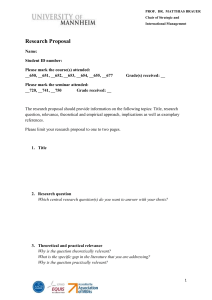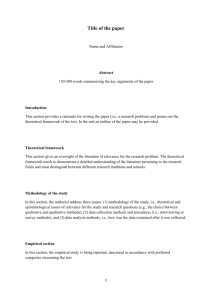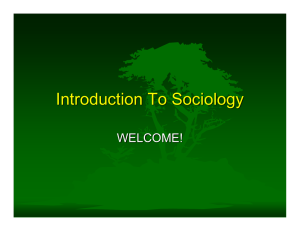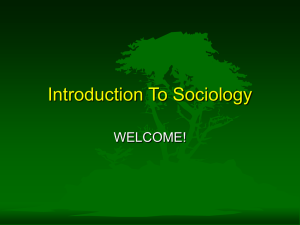Writing in APA style
advertisement
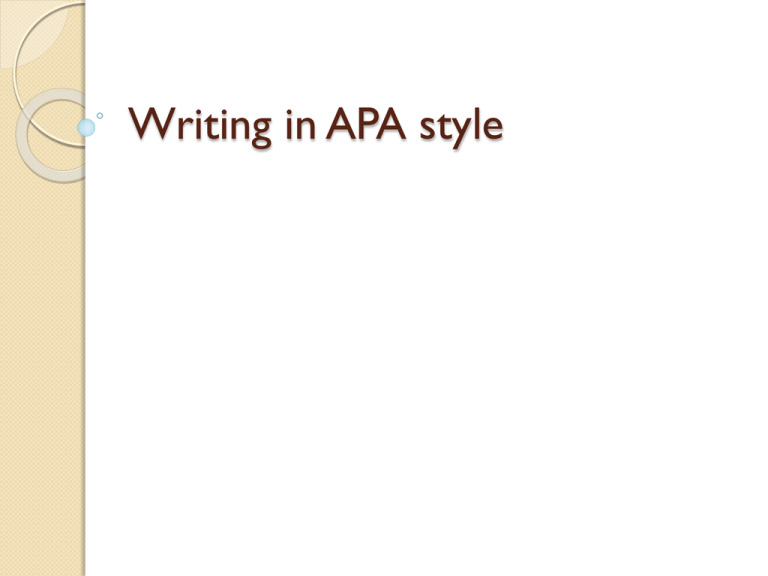
Writing in APA style You can chose between three articles: Ttheoretical articles Reports of empirical studies. Review articles. Theoretical Article Examine the current research on certain topic Trace the development of the of a theory to reach the latest thinking or conclusions over certain topics. The theoretical article usually achieves the following aims: 1. Identify a problem with a historical implications. 2. Trace the development and history of the evolution. 3. Provide systematic analysis of the articles that tackles the problems. 4. Arrive at judgment and discussion of a prevailing theory. Reports of an empirical Study When you conduct field research , you need to report the details, results of the research. 1. Introduce the problem investigated. 2. Describe the method used to conduct the research. 3. Report the results. 4. Discuss , interpret the findings and explores the implication. Review an article A review of article sets out to achieve: 1. Define a problem that is the subject of discussion. 2. Summarize the article. 3. Analyze the literature to find out the strengths , weakness in research. 4. Recommend additional research Formatting an APA Paper Theoretical paper: a. Introduction: - establish the problem under investigation. - Discuss its significance to the scientific community. Quote the experts who commented on the issue. Provide a thesis sentence that gives initial perspective on the issue. Theoretical Paper The body of theoretical paper 1. Trace the various issues. a. Framing questions as atopic sentence gives the opportunity to develop a thorough answer.(see p.205) b. Define your key terminology c. Explain the process 2. - Establish a past to present perspective. 3 - Compare and analyze the various aspects of the theories. 4 - Cite extensively from the literature. Theoretical paper Conclusion should have: 1. Thesis: a. reaffirm your thesis . b. defend the theory as it grows from the evidence in the body. 2. Discuss: discuss the implications of your findings. 3. Directive: Suggest additional work that might be launched in this area or offer a plan that will put into effect your ideas. 4. Ending: use the final paragraph especially the final sentence to end your article.You may use Effective quotations. Report of empirical Research The Introduction: A. Establish the problem to be examined. B. Provide background knowledge. (review of literature) C. Give the purpose and the rationale of the study. Report of empirical Research The body: 1- Methods: Provide a method section for explaining the design of the study with respect to the subjects, apparatus and procedures. 2.Results: Offer result section for listing details of findings. Report of empirical Research The Conclusion: Discussion: A. discuss the implications of the findings and make judgments as appropriate. B. Identify the limitations of your study. Review Article Introduction: Identify the problem of the subject. Summarize the article. The body: A. Systematic analysis of the article (findings , significance). The conclusion: Discuss the implications of the findings and make judgments as appropriate Writing an Abstract 1. Accurate: reflecting purpose and the content of the paper. 2.self –contained: a. explain the precise problem b. describe both methods and the findings. C. gives an overview of your conclusion. 3. Nonevalutive: don’t appraise or asses the value of work. 4. Coherent and readable: uses active present tense to describe results ( the findings confirm) but the past to describe testing procedures Abstract of theoretical papers The topic in one sentence The purpose , the thesis, and scope of paper. A brief reference to the sources used (published articles, books, personal information). Abstract of empirical study The problem and hypothesis in one sentence. A description of the subjects. A method of study including the procedures and apparatus. Revising , proof reading and formatting the rough draft. Global revision: 1. Skim the paper to check its unity. Does maintain a central proposition from one paragraph to another. 2. Transplant paragraphs , moving them to more effective positions. 3. A you cut, paste remember to blend words into your text. 4. revise the outline to reflect the global revision. Add your comments to paragraphs that depend heavily on the source of materials. Examine the transitions used to move from one paragraph to another. -Combine short paragraphs together to form one great substance.

